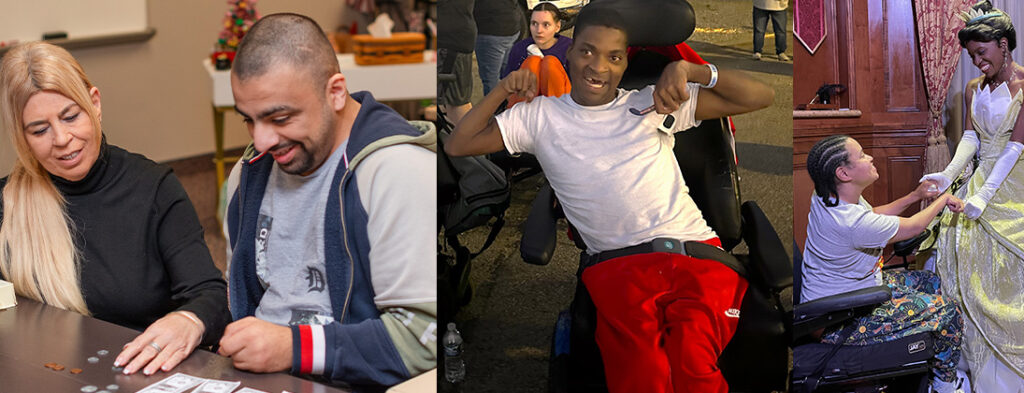Disability: Part of Me, not My Whole Identity
Individuals with a physical disability have limitations in one or more limbs; these result from injury, heredity, post-surgery illness, or accidents. Examples of physical disabilities include cerebral palsy, spinal cord injuries, amputations, spina bifida, and musculoskeletal injuries. The U.S. Department of Labor states, “As the largest minority, comprising almost 50 million individuals… [people with disabilities] contribute to diversity.”
An intellectual disability is a condition of slow conceptual development over a lifespan, in which medication has little or no effect. “An intellectual disability is when limitations in your mental abilities affect intelligence, learning, and everyday life skills” (Cleveland Clinic, 2023). Intelligence is the ability to understand and interact with an environment. Signs of intellectual disabilities appear during childhood – including delayed learning, reasoning difficulties, or critical thinking problems.
Contrary to intellectual disabilities, someone with mental illness can be treated with medication, psychotherapy, or other support. It is a significant disturbance in emotion regulation, behavioral patterns, or cognition. According to the World Health Organization (2022), one in eight people live with a mental disorder. Mental health disorders shape how someone relates to those around them. These conditions can be short-term or chronic, continuing for long periods.
Anxiety and depressive disorders are the most common mental health conditions. “In 2020, the number of people living with anxiety and depressive disorders rose significantly because of the COVID-19 pandemic. Initial estimates show a 26% and 28% increase, respectively, for anxiety and major depressive disorders in just one year” (WHO, para. 2). Childhood trauma, family history, chemical imbalances, severe medical conditions, or feelings of loneliness increase the likelihood of mental health conditions.
Those with disabilities perform daily activities and engage with the world uniquely. The Centers for Disease Control states: “Although people with disabilities sometimes refer to a single population, this is a diverse group of people with a wide range of needs.” Autism is a spectrum disorder, for example, in which individuals are affected differently.
Three dimensions of a disability are impairment in structure and function, activity limitation, and participation restrictions. An activity is when an individual performs a task. Participation is engagement with a life situation.
The prevalence of disability is widely underrated. Ludmila N. Praslova, Ph. reports in the article Disability at Work: The Forgotten Diversity, “that 25 percent of employees self-identify as having a disability or medical condition that limits a major life activity, most companies report that just 4 to 7 percent of their employees are people with disabilities.” Seeing the person before the disability is a step towards furthering diversity and inclusion.
Resources
https://www.cdc.gov/ncbddd/disabilityandhealth/disability.html
https://www.who.int/news-room/fact-sheets/detail/mental-disorders
https://kines.rutgers.edu/dshw/disabilities/physical/1060-physical-disabilities
https://medlineplus.gov/mentaldisorders.html#cat_51
https://www.understood.org/en/articles/conditions-covered-under-idea


